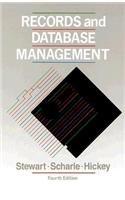Answered step by step
Verified Expert Solution
Question
1 Approved Answer
Using Java, add features into the Fraction class as described below. Fraction exercise Start with this copy of the Fraction class (see below) and add
Using Java, add features into the Fraction class as described below.
Fraction exercise
Start with this copy of the Fraction class (see below) and add the following features:
- Write a method called Simplify, which returns a simplified version of the calling object (no parameters are needed). The method should return a new Fraction (simplified), but not change the original one. The fraction in the form 0/N should have simplified form 0/1. Any other fraction has the usual mathematical definition of "simplified form". Keep within the rules already established in this Fraction class (e.g. denominator always positive, any negative values go in the numerator, etc).
- Write methods add, subtract, multiply, and divide. Each one should take in a Fraction as a parameter and perform the given computation between the calling object and the parameter object. (The calling object is always the first operand). The result of each operation should always be a fraction returned in simplified form. Example calls:
f1.add(f2) // means f1 + f2 f1.subtract(f2) // means f1 - f2
In divide, if an attempt is made to divide by a fraction with the value 0, default the result to 0/1. (Such division is actually undefined. 0/1 is not the "true" result, but we need to return something from this method). - Here are your method signatures:
public Fraction simplify() public Fraction add(Fraction f) public Fraction subtract(Fraction f) public Fraction multiply(Fraction f) public Fraction divide(Fraction f)
- Make sure that your new methods enforce the following rules: the denominator must be non-negative (any negative sign goes in the numerator) and the denominator must never be zero (this would be undefined).
_________________________________________
See below for Fraction.java
public class Fraction { private int numerator = 0; // numerator (and keeps sign) private int denominator = 1; // always stores positive value public Fraction() { } public Fraction(int n, int d) { if (set(n,d)==false) set(0,1); } public boolean set(int n, int d) { if (d > 0) { numerator = n; denominator = d; return true; } else return false; } public String toString() { return (numerator + "/" + denominator); } public int getNumerator() { return numerator; } public int getDenominator() { return denominator; } public double decimal() { return (double)numerator / denominator; } } Step by Step Solution
There are 3 Steps involved in it
Step: 1

Get Instant Access to Expert-Tailored Solutions
See step-by-step solutions with expert insights and AI powered tools for academic success
Step: 2

Step: 3

Ace Your Homework with AI
Get the answers you need in no time with our AI-driven, step-by-step assistance
Get Started


